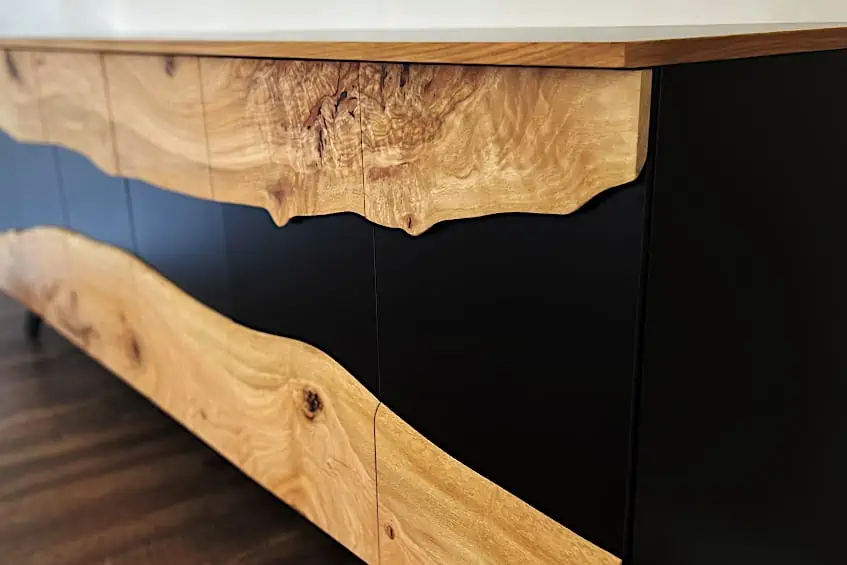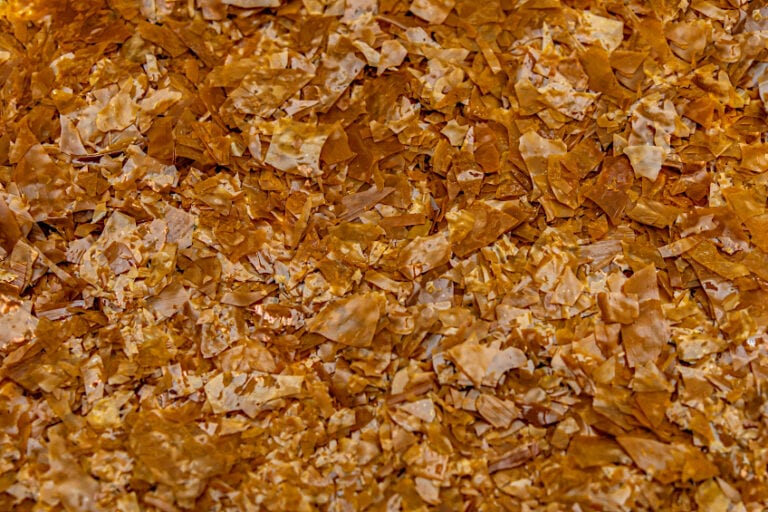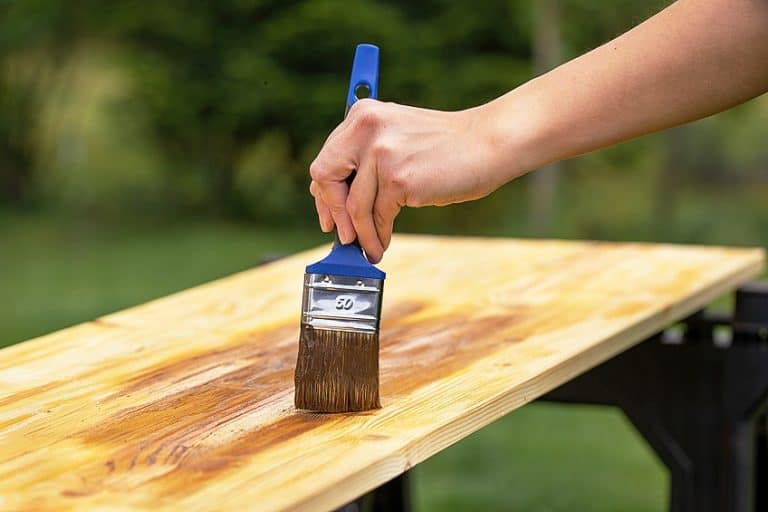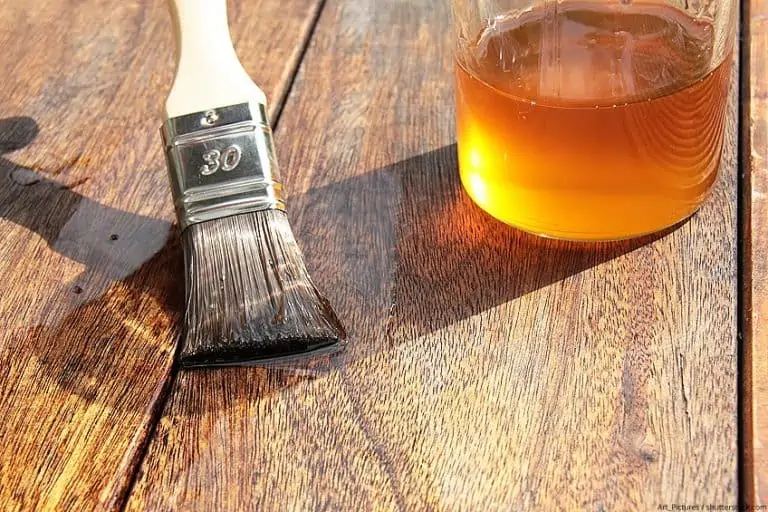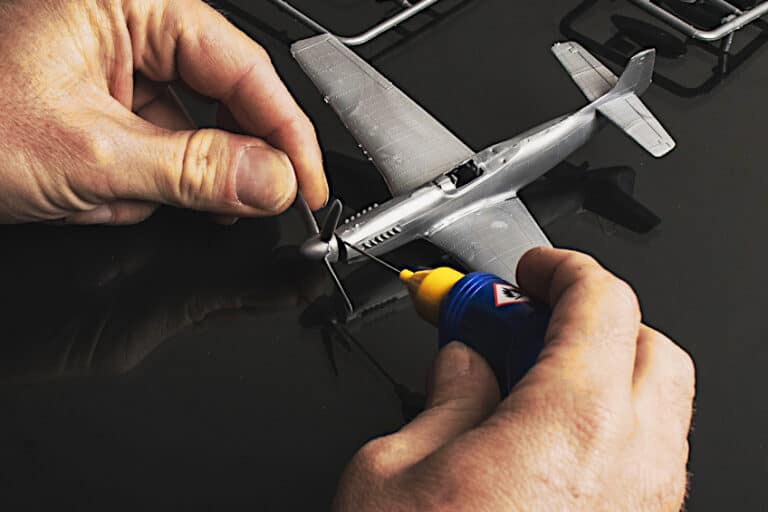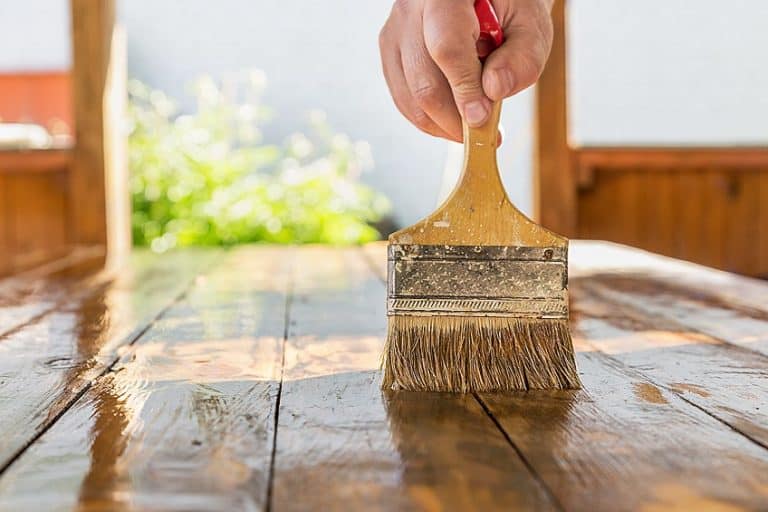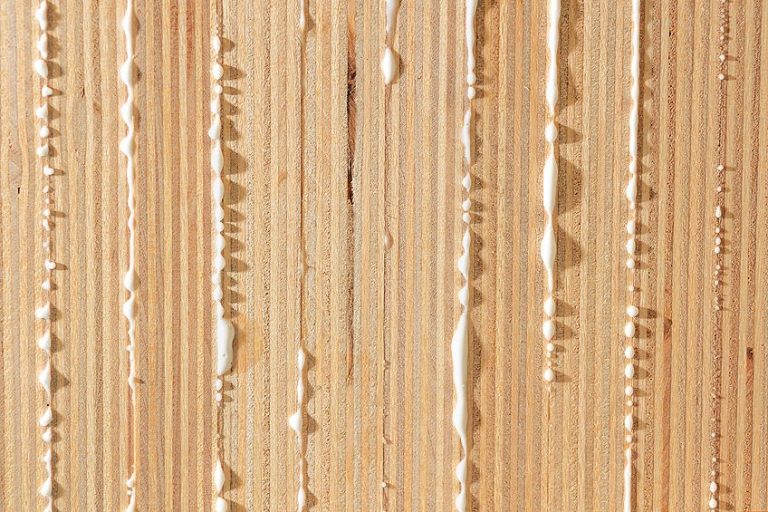How to Finish Oak – Lacquers, Oils, and Waxes for Oakwood
When most people think of something that’s 600 years old, thoughts of obsolete technology made of cast iron come to mind. This is not the case with everything though, and in the case of oak tree wood, you couldn’t hope to find a more personable wood to work with. Oak trees can range anywhere from 600 to over 1000 years old and have been around long before then, in even bigger and tougher forms. Oak is a strong and versatile wood that has many applications throughout the private and commercial market, so let’s take a look at what makes this wood so special and how you can go about finishing it to make your next workpiece stand out.
Table of Contents
What Makes Oak Wood So Special?
Oak is one of the oldest woods on the face of the planet, and as we mentioned previously many examples of these species are more than capable of living well beyond 500 years old. This is extremely long-lived, in fact, its lifespan is only rivaled by bacteria and some very fortunate sea turtles.
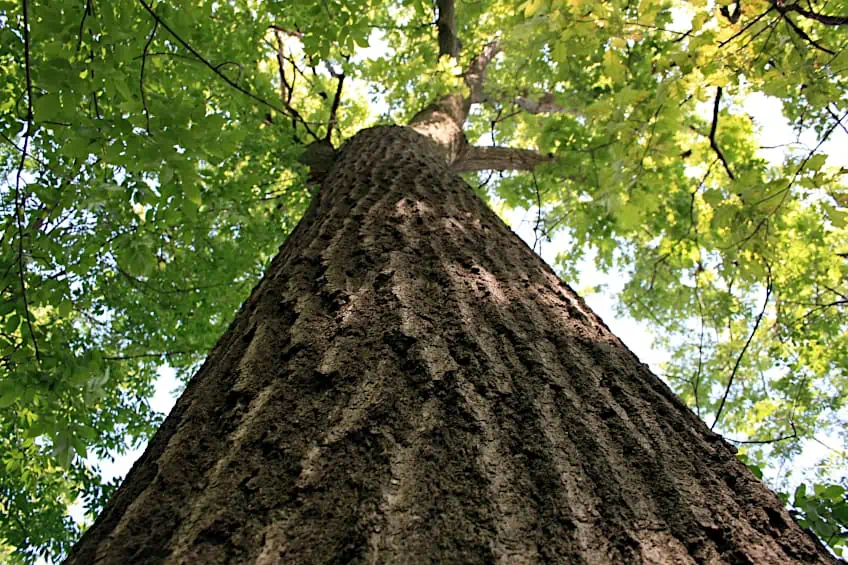
Oakwood isn’t just well known for its long lifespan, it is known mainly for how versatile of material its heartwood and sapwood can be used for various applications, a good example of this is how oak heartwood can be used to make furnishings with really robust applications like chests of drawers, hardwood flooring, roofing, and even exterior decks.
On the opposite end of the spectrum, the sapwood of oak trees can be used for more lightweight applications, while they can be used for things like small furnishings, arm and leg rests, and even small shelving. Oakwood is often coveted for being the strongest and most durable wood on the face of the planet and can fetch quite a bit of money outside of the United States.
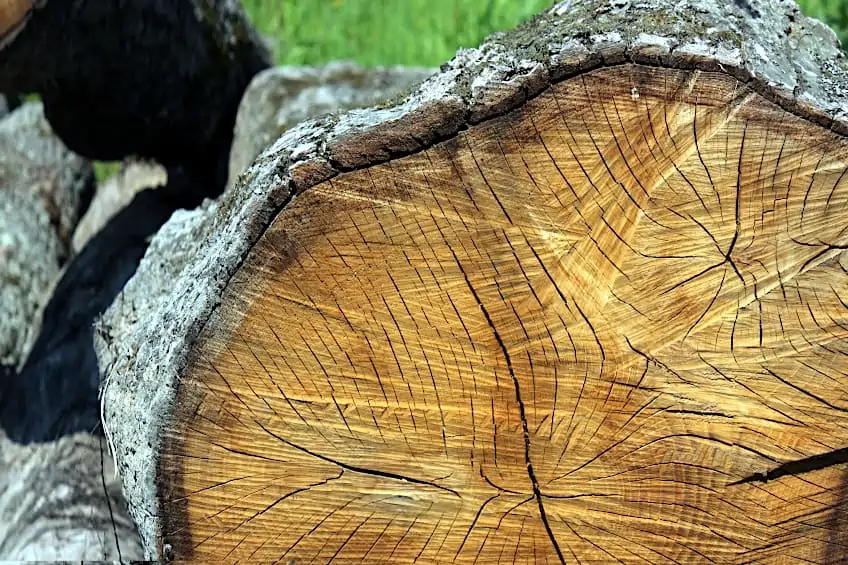
In fact, oak is such a well-rounded wood that is used almost exclusively by one of the most industrious woodworking cultures in America, the Amish. Their people have used oak for generations to ensure that both housing and agricultural structures are made of the most durable and simultaneously flexible natural material available to them.
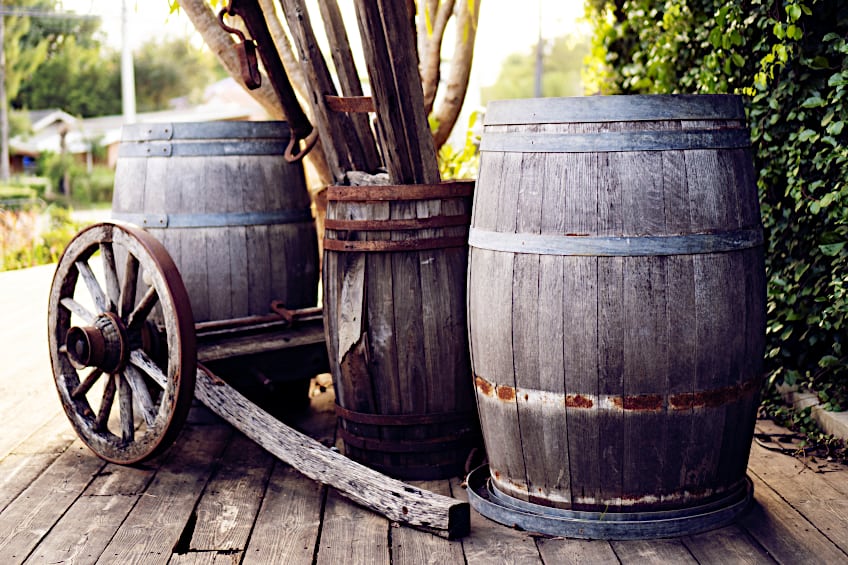
Although white oak is arguably the most common species of oak used in and around the United States, there are over 60 varieties of oak. Each has it own color, grain pattern, and primary applications.
Oakwood is also unique due to the way it changes in color over time, where most other woods tend to simply become dull, oak wood ranges from beautiful reds to oranges and even variations of yellow as it ages. The aging process is dependent on the amount of sunlight oak is exposed to, therefore different regions of the US experience nearly entirely different color spectrums as their workpieces age over time.
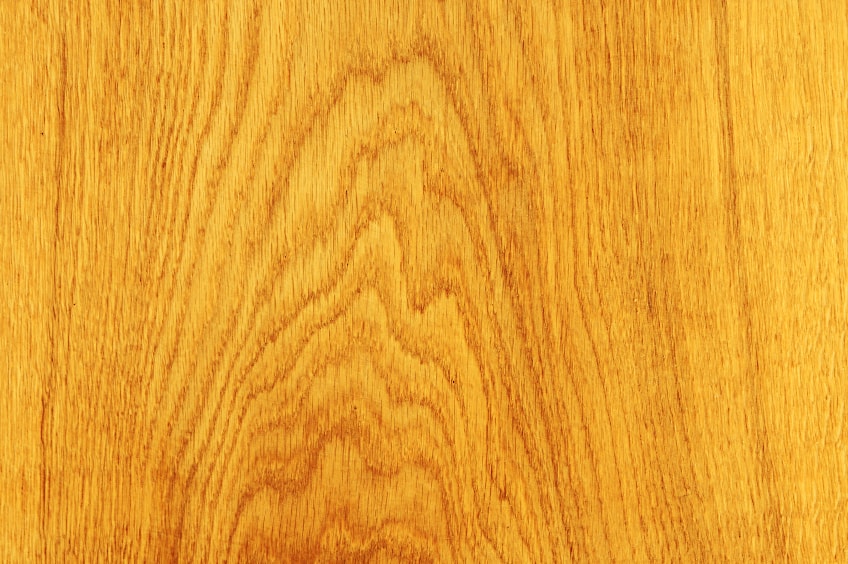
What Is the Difference Between Red Oak and White Oak?
As we mentioned previously the most common type of oak on the market is white oak, which many refer to simply as “natural oak”. The second most common variation of the wood is red oak which is subtly different while simultaneously being entirely distinct from white oak. Let’s have a look at some of the key differences between red oak wood and white oak wood so it’s a bit easier for you to decide which wood will suit your next project best.
Red Oak Wood
Red oak wood has always been a party pleaser in the woodworking industry, and although it is distinct from the more commonly used white oak it has a lot of the same qualities, which shouldn’t come as much of a surprise as the two types of wood are typically used for the same purposes.
Red oak is commonly found in the Northeast United States and is slightly lighter in appearance compared to white oak. Red oak has a stunning brain pattern that is largely uniform in appearance, which is why this wood is often most sought after in the flooring industry, due to the symmetry a flooring made from this species of the oak tree can provide.
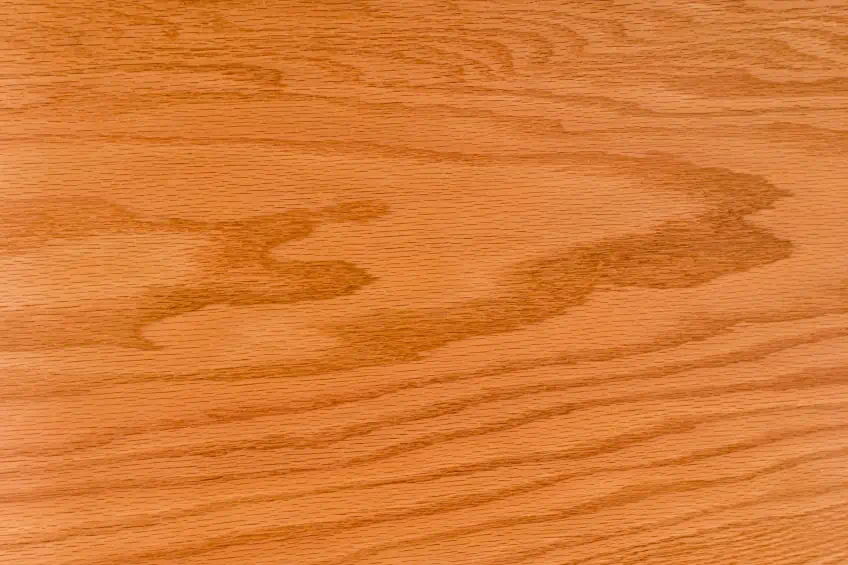
Red oak, as you might have guessed, has a red appearance, but this leans more toward a pink or orange undertone when compared to the actual color red, in fact, if red Oakwood has been grown in particularly moist soil the color might resemble a salmon tone. This wood is slightly softer than its lighter counterpart, but only by a margin of around 60 on the Janka scale. Since this doesn’t mean much once the wood has been treated and sealed, the applications for both kinds of wood are virtually identical.
Two deal-breakers for most buyers when choosing between red oak and white oak is the fact that red oak is slightly cheaper than white oak. However, the trade-off is that red oak is susceptible to infestation by insects when untreated, where white oak is not. This being said, you should always consider what you’ll be using the wood for when making your choice.
White Oak Wood
White oak could be considered the backbone of most heavy-duty woodwork projects. This wood is primarily found in the Eastern part regions of America and can be found in virtually every trade imaginable, whether it be indoor or outdoor.
Why? Well, we mentioned previously that red oak is susceptible to things like rot and insect infestation, this is due to red oak having rings that are sparsely spaced which leaves room for things like moisture to gather which makes ideal conditions for rot to begin, which in turn create cavities for little bugs to make their home.
White oak does not have this problem. Because it grows in environments that experience extreme cold, white oak has developed in such a way that its rings are spaced really close together, which means there is no chance of rot occurring.
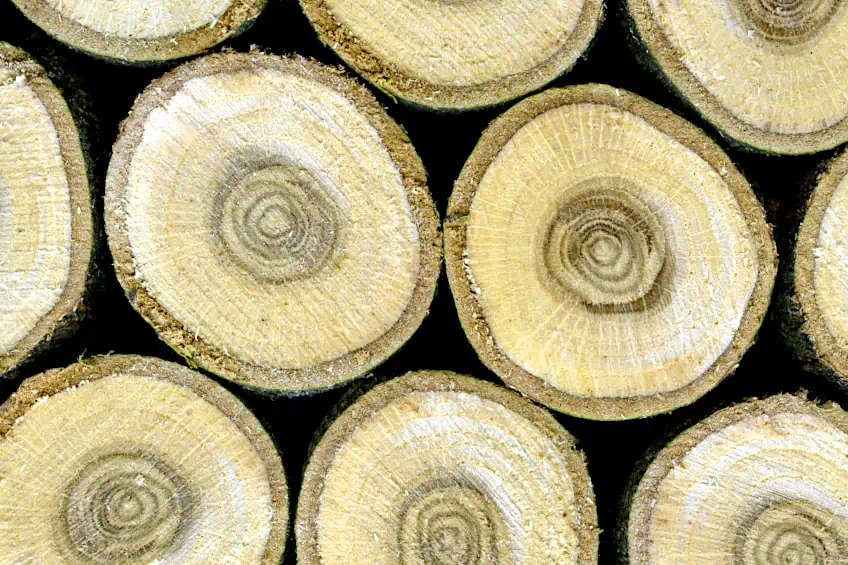
This also makes white oak essentially watertight, which in turn makes it the go-to wood for things like flooring, roofing, outdoor decks, boat building, and offshoots of these applications. White oak, contrary to what the name suggests, isn’t really white at all, in fact, it presents more of an opaque, brown, or grey color once it has been chopped up into boards.
This light oak wood is ideal for flooring because unlike red oak which has a deep existing tone, the color of white oak will have less of an affect on the colors of stains or paints. White oak is also slightly stronger due to its tightly woven grain, which means that it resists damage much easier compared to red oak, but the trade-off is that it is slightly more expensive than red oak.
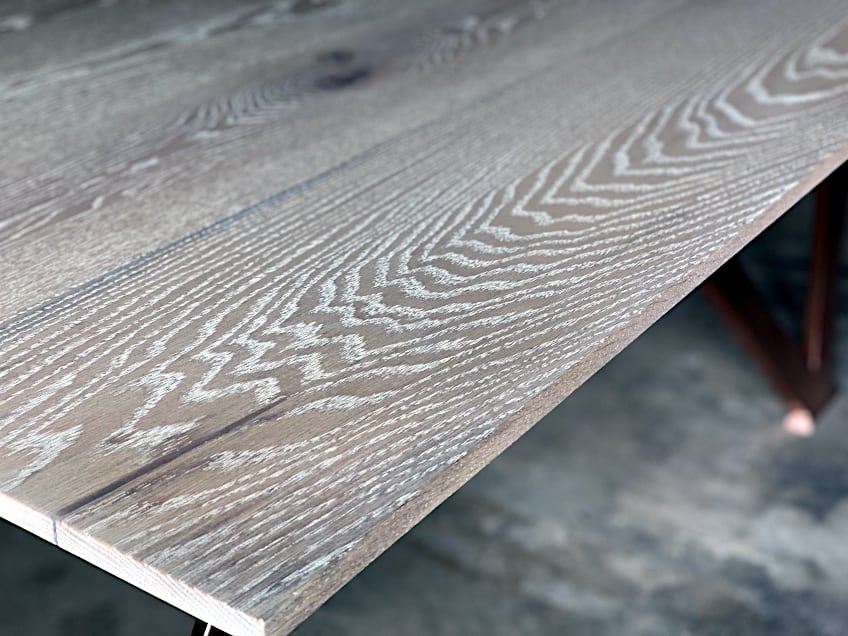
At the end of the day, it does depend on whether you’re the kind of person that would like to customize their furnishings (in which case you’ll probably choose white oak) or whether you’d like a material that you can simply purchase, seal, and install (in which case you’ll probably choose red oak).
What Types of Finishes Are Available for Red and White Oak Wood?
There are various oak finishes available for each type of Oakwood on the market today. There are intricate finishes but most of them are relatively simple, requiring little to no preparation to get an absolutely stunning finish that could very well last the lifetime of your workpiece. Let’s have a look at some of them. Remember that oak is really easy to work with, so even though it might seem like a monumental task, you’ll likely be done before you know it.
Brushed or Sprayed Lacquer Coating
Although lacquer can be applied with both a brush and a sprayer, the kind of oak finish you’ll likely be going for here is the smooth glossy kind that reflects the sunlight coming through your living room windows (which requires the sprayer).
Lacquer (sprayer or otherwise) is a great finish because it adheres to the surface of your workpiece with little to no preparation. It produces a high-quality finish with only a simple light sanding of the surface and let’s face it any finish that requires no priming and this level of aesthetic appeal is always going to be a winner.
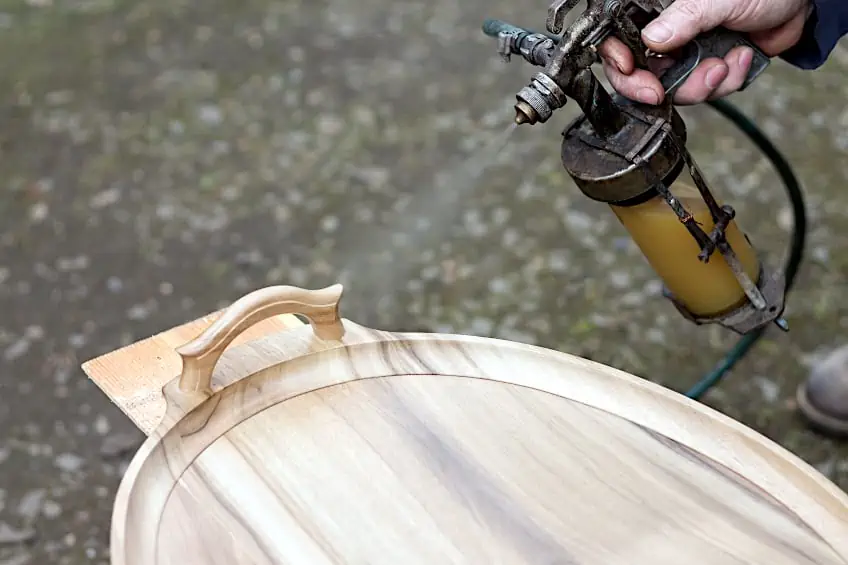
Lacquer does need to be maintained a lot more often than other finishes, but as a trade-off, it does a really good job of protecting your workpiece from impacts and other exterior forces that might otherwise ruin all your hard work. Although it will protect your wood, if you have little kids around it will pick up scratches quite easily.
Danish Oil Treatment
If you’re looking for an oak finish that looks natural and won’t, have you reapplying it every few months due to tiny scratches becoming visible on the surface of your workpiece, then Danish oil might be right up your alley. Danish oil seems to have gotten a bad rap for penetrating deep into the wood’s surface to a worrying degree, but this is not entirely true.
If applied correctly (or in moderation as most manufacturers usually state) Danish oil can produce an incredible finish that allows you to accentuate the wood’s natural tone while preserving the natural grain and providing a protective layer to both the surface and internal wood fibers of your workpiece.
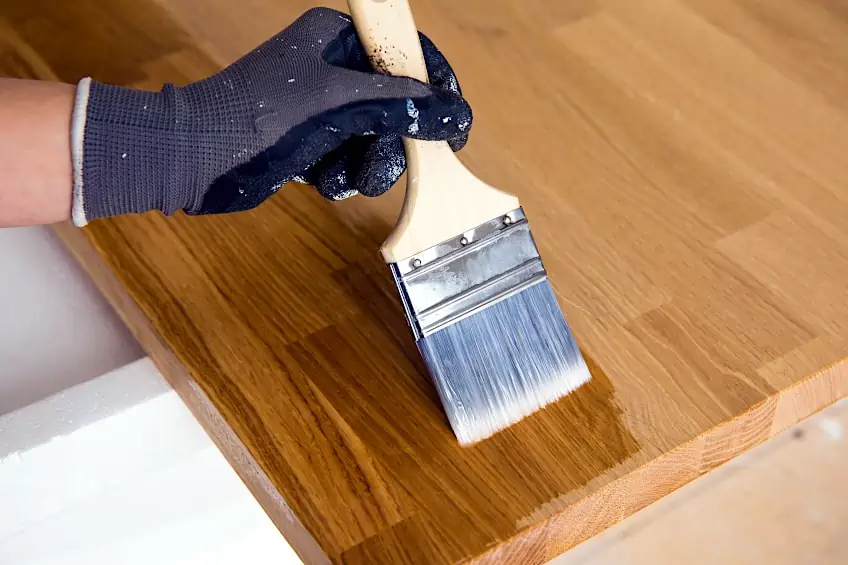
The benefits of this finish aren’t just visual either, its finish pretty much ensures that you won’t have to dust it every single day, and it doesn’t retain fingerprints or water stains the way Linseed oil or varnish do when they are first applied. If you’re a beginner and you think this finish is a bit out of our league, think again. Danish oil is not only easy to apply but it can be effortlessly maintained by simply sanding and re-treating areas of your workpiece that have been damaged.
Beeswax Finish
This type of finish is rivaled only by the infamous Tung oil finishes that seem to be rather popular in recent months. Beeswax is an all-natural wood treatment that provides an amazing finish to virtually any hardwood, and as far as oak finishes go, beeswax is among the best on the market.
This finish is readily available and easy to use, simply prepare your workpiece with light sanding and apply a small amount to the surface. Once applied this treatment is simply rubbed into the wood to form a protective layer that not only makes your furnishings look cozy and inviting, but will provide a layer of protection against minor abrasions.
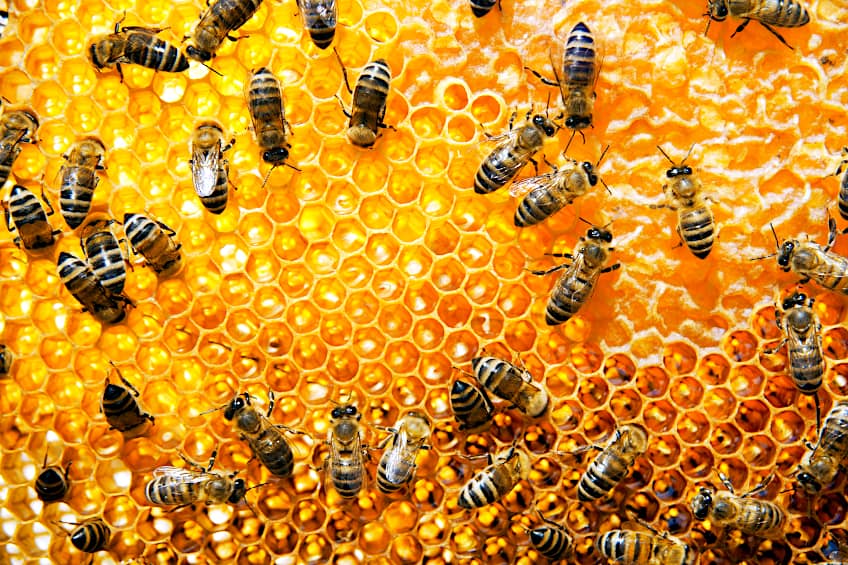
Beeswax is also really good for the environment, it contains no volatile organic chemicals (VOCs) and is really easy to maintain, which means that you won’t have to get out your entire toolkit when maintenance time comes around. Unlike some of the other finishes we have looked at so far, this one does a great job of breathing life into older furnishings which might have been neglected over time.
The trade-off for this wood treatment is that it doesn’t mix well with cleaning chemicals which means that workpieces treated with Beeswax shouldn’t see an awful lot of practical application.
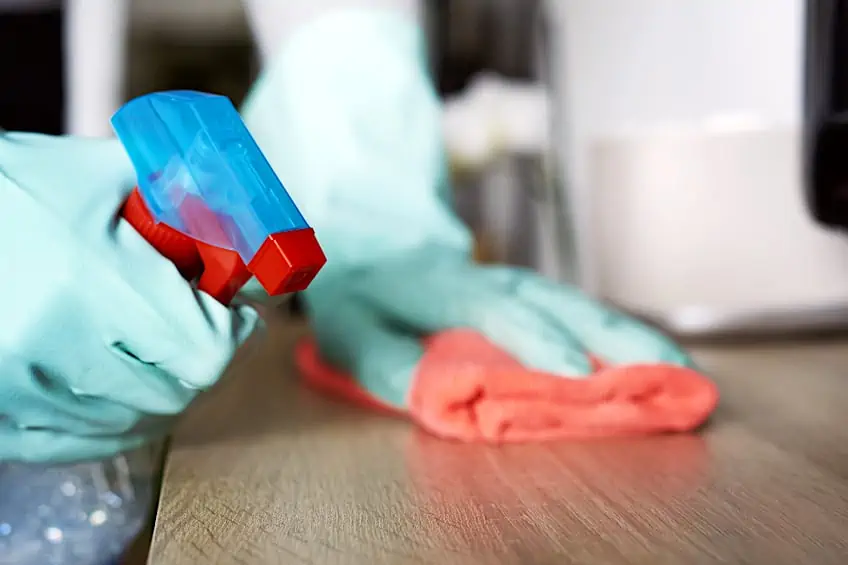
What Is the Best Finish for Oak Wood?
Finishing oak can be a tough decision-making process, it is essentially a blank canvas that allows you to do pretty much anything you’d like. We know this, that’s we’ve taken it upon ourselves to make finishing your oak workpiece that much easier for you by providing some of the best finishes money can buy. Remember to always check whether the finish would be conducive to the type of oak you are using, whether it be red oak or white.
- Lacquer Spray
- Danish Oil
- Beeswax
How to Finish Oak
Knowing which products are best can help you choose a finish for your oak surfaces, but if you don’t know how to finish oak, you’re just buying a product for it to sit on a shelf. This being said, we have taken it upon ourselves to provide you with the best way to go about finishing your red or white oak wood in the best way possible. The finishes we have covered thus far have been rub-on treatments that won’t require much preparation, and since we’ve decided to stick with this theme, we’d like to show you how to execute one of the most beautiful finishes for oak wood: wood stain! Here is a short tutorial showing you how to stain your red or white oak wood board. (These methods can be used to apply all of the aforementioned treatments too!).
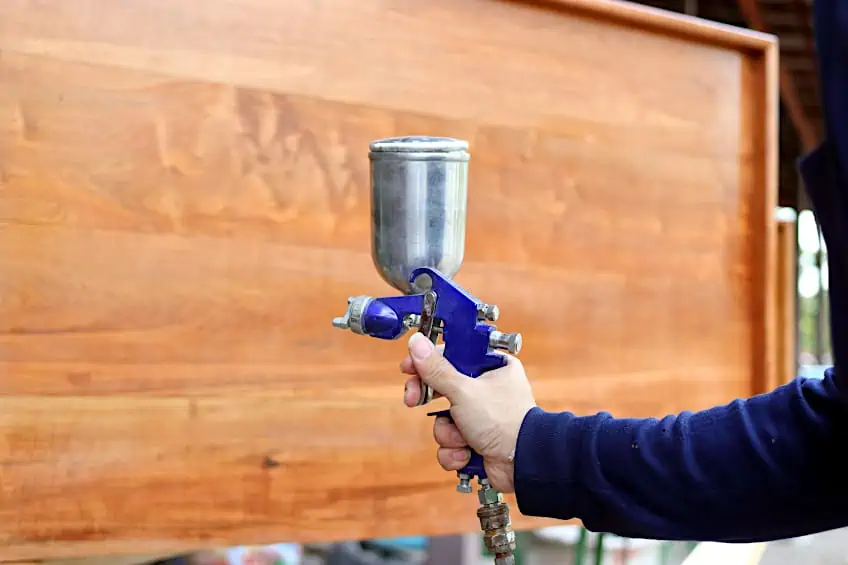
Prepare Your Board
When coating or treating any wood board the most important step you can take is to prepare your board properly. Once you have chosen either your red or white oak, ensure that you sand it adequately.
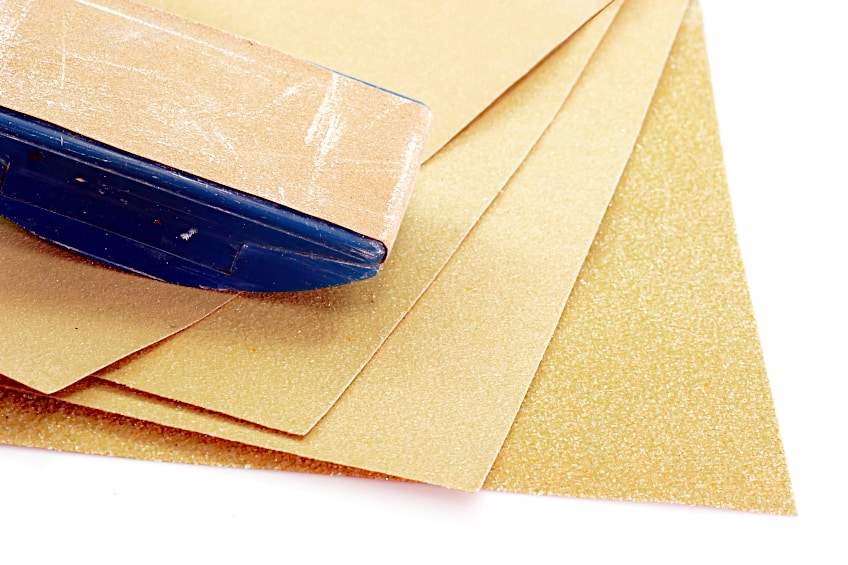
Red oak is softer so you could use slightly more coarse sandpaper when sanding it down, and when sanding white oak, you should use between 120 to 140 grit sandpaper when preparing the wood’s surface. Sanding paper will do just fine on smaller boards, but if you are preparing bigger boards, you should consider using a power sander to save yourself some time and some elbow grease.
Once your board has been sanded, give it a once over with a clean damp cloth to ensure there are no stray wood particles left on the surface of the board before moving on to the next step in the process.
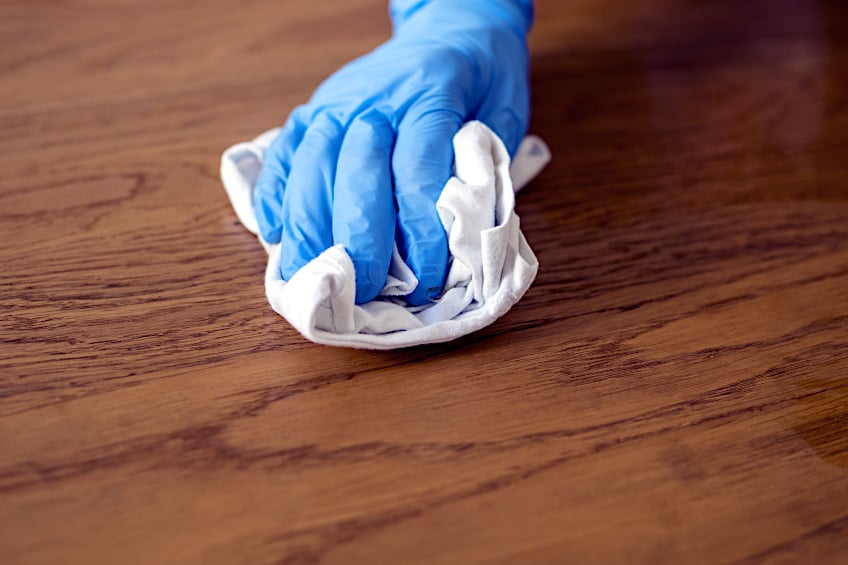
Prepare Your Stain
Once your board has been sanded down, it’s time for you to prepare your wood stain. If you are using the kind that comes inside those tin containers simply get a stick or similar object and give it a good mix. Why do this? Well, if the stain is left alone for a while the heavier particles might sink to the bottom of the container, stirring the stain ensures that these particles rejoin the rest of the mixture.
Applying stains that have not been mixed adequately may result in poor adhesion or a poor color once the stain has had a chance to cure completely. If you are using spray-on stain, ensure that you give the can a good shake before applying your first coat of stain to ensure that it is the same as the aforementioned, just don’t shake it up too much (manufacturers normally have instructions for this step with/on the can).
Once you are sure that you have prepared your wood stain adequately, check that your workpiece is clean one more time before moving on to the next step in the process.
Apply Your Wood Stain
Applying wood stain is a lot like applying paint or any other coating, with the only exception being that wood stain seeps deep into the wood’s surface instead of drying and curing on top. If you are applying your wood stain with a brush, simply dip ¾ of the brush into the wood stain and start applying it to the surface of the board.
If you are staining a smaller board start from one end and work your way to the other, ensuring that you apply your stain evenly throughout the process as an uneven application can result in certain parts of the board being saturated and producing blotchy areas on the surface of your workpiece. The idea is to apply light coats and allow the stain to cure so you have an idea of the potency of the stain.
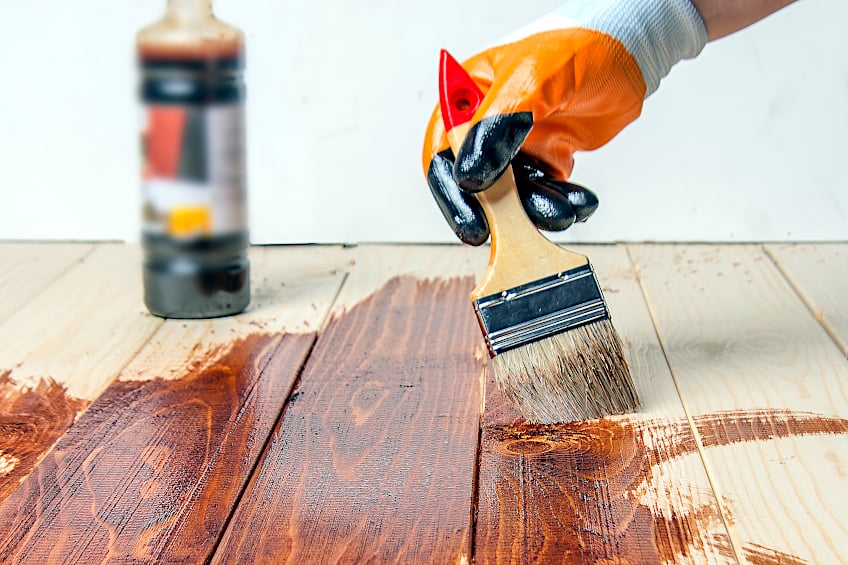
If you are applying, you stain with a cloth simply add some stain either directly to the surface of the workpiece or to your cloth and rub it into the surface of your workpiece. For smaller workpieces work your way from one end of the board to the other, and when faced with smaller or irregularly shaped workpieces start at the center and work your way outward.
Remember, if the color is too light, you can always apply more stain, but it takes considerably more effort to sand down your entire workpiece and start over again if you applied too much stain. If you are using a spray-on wood stain, start by spraying the surface by moving your wrist in one fluid, uninterrupted motion across your workpiece until a complete coat has been applied.
In either case, allow the coat to cure for the manufacturer’s recommended time period before re-sanding and applying the next coat if you feel that the effect produced is too light. Once you are satisfied you do have the option of adding a sealer such as polyurethane, but this is ultimately up to your personal preference.
Now that you know what makes oak wood so special, what types of finishes are available for oak wood, what the products on the market are for oak wood, and how to stain your Oakwood, it’s time for you to get out there and put your newfound knowledge to the test. Remember that you should always consider which type of oak you’re using, and which applications suit their strengths and weaknesses best.
Frequently Asked Questions
Is Staining Red Oak Easy?
Is staining red oak easy? Red oak is considered to be the softer of the two primary oak wood types. Although this isn’t by much, it is considered to be the easier to stain of the two woods, as it absorbs and retains the stain more effectively than its white oak counterpart.
Is White Oak Good Wood?
What makes a good wood? This depends largely on what you plan on using it for, but if we’re looking at objectively good characteristics in the context of common applications of wood, then white oak is a really good wood. White oak is versatile, resistant to rot, easy to work with, aesthetically pleasing, readily available, and pretty strong too.
Why Is White Oak So Expensive?
The versatility of white oak generates high demand across multiple industries, making it more expensive than most hardwoods. In addition, white oak trees are very slow-growing and costly to harvest and process, resulting in a much higher overhead costs.

I have been into woodworking since 2005 and woodturning since 2011. Because of my love for wood and woodworking, I started woodhappen.com to teach other enthusiasts about how to finish and seal wood, the best woodworking tools, the different types of wood, and everything else related to woodworking! Read more about me here.

